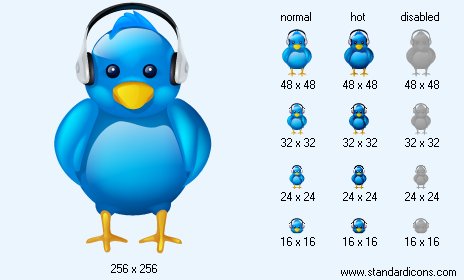


|
| ||||||||
|
|
Audio Icon |
|
Icon sizes: 256x256, 48x48, 32x32, 24x24, 16x16, 512x512
File formats: ICO, GIF, PNG, BMP
Choosing An Appropriate File Format For Your Icons.
There are innumerable image formats that should be used for storing images and for a newbie web creator this can usually turn into a major problem because you should understand how to utilize a particular format, here is a a take on the benefits and issues of some commonly used formats.If you are interested in icon making or wish to create graphical representations for your web page, it is crucial to know about the varied file formats and their attributes so that you can utilize the appropriate format for an image. Among the most popular formats for graphics are JPEG, PNG and GIF, each one of these formats has its own traits so lets talk about the pros and cons of utilizing these formats, the type of file that should suit your website and optimizing your web graphics for the web usage.
GIF: The full form is Graphics Interchange Format; this is by far the most popular file type. The reason for its popularity is its tiny image size which makes uploading a breeze. But like in the JPEG format, information is not lost in this format this means you can save the file in a smaller size without deteriorating the quality of the picture. The format is also known to support transparency in pictures, it is the most commonly used image formats for picture creation. Unlike the other formats, animation is also offered in GIF. If you would like to go for GIF file optimization, it is necessary to keep the size of the image small; it is recommended that you select a 32 color palette to get the least possible size.
JPEG: This is short for Joint Photographic Experts Group; the file format is generally called JPG and is often used for online graphics. One of the primary advantages of utilizing this type of file is that you will be able to save the images in true color that offers you an impressive range of 16 million colors; making this file format ideal for saving photographs and images that include detailed color work. One of the issues of using JPG is the data loss that is encountered each time the file is stored; this equates to the fact that the image is susceptible to blurriness and some details may be lost. Unlike GIF, transparency is not possible in this format. If you have chosen an innovative image editing software for instance, the Adobe Photoshop, you will have the liberty to choose the image quality and the file size but it is imperative to realize that a lower resolution will mean a small size, which is simple to upload.
PNG: Is an abbreviation for Portable Network Graphics and is a fairly new image format. PNG is provided in two versions types; PNG-8 which is the 8 bit color format and the PNG-24 which uses 24 color pictures. PNG-8 can curtail the size graphics with fantastic detail and without the customary loss of details seen in GIF files; this results in better quality pictures and quick uploads. But, PNG-24 is not as efficacious as JPG when you have to store photographs and other graphics that merit the use of a wider color palette. The format is loss-less; this means that the picture maintains its clarity and quality. PNG-24 offers the transparency feature and you can use different levels of transparency in this file format. When you use this file format the images are professional looking because you cant see jagged lines when inserted against a contrasting background like GIF files.
Copyright © 2009-2022 Aha-Soft. All rights reserved.
|
